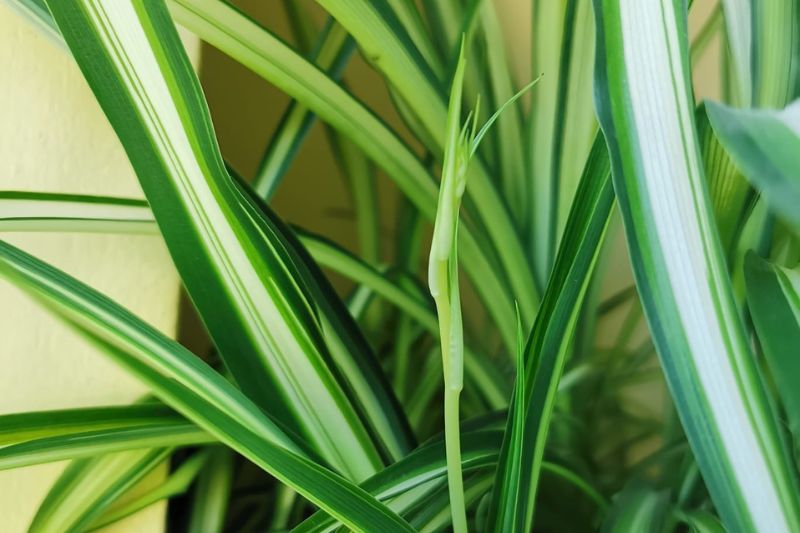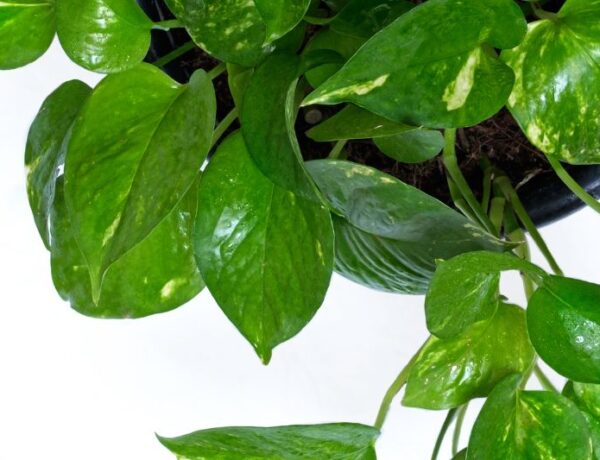Do spider plants flower? Well, the short answer is, “Yes, they most certainly do!” Is your enthusiasm at an all-time high and you’re preparing to rush out and buy a spider plant to bring home or are you standing scratching your head wondering why your spider plant did not flower yet?
Before jumping to conclusions, let’s explore what spider plants need to bloom and when is the right time for them to make flowers.
Table of Contents
Spider Plants Do Flower
Flowers might not be the main attraction when it comes to spider plants, as their lovely foliage often steals the show. However, their flowers can be a nice surprise. The tiny, star-shaped, white flowers emerge from long, arching stems known as inflorescences or ‘flower stalks.’ And the best part? These flower stalks eventually produce spiderettes, which are basically mini spider plants that you can easily propagate.

When Do Spider Plants Flower?
Indoors, spider plants can flower pretty much any time of year. There’s no strict schedule because their flowering cycle depends on the plant’s maturity and the conditions it’s grown in.
Generally, a spider plant will start flowering when it’s about a year old. But don’t worry if yours takes a bit longer—every spider plant has its own rhythm.
Why Do Spider Plants Flower?
In the wild, spider plants flower as part of their natural reproductive process. Once pollinated, these flowers develop into small, capsule-like fruits containing seeds.
Indoors, pollination might not happen, but that doesn’t stop your plant from flowering! Seeing flowers on your spider plant is a sign that it’s happy and healthy. It means you’re doing a great job providing the right balance of light, water, and nutrients. If your spider plant isn’t flowering, it might be a cue to tweak its care routine.
How to Encourage Your Spider Plant to Flower
If you’re eager to see your spider plant bloom, here are a few tips:
- Lighting: Spider plants prefer bright, indirect light. While they can handle lower light, a spot near a north or east-facing window is perfect for encouraging flowers.
- Watering: Avoid overwatering your spider plant. Let the top inch of soil dry out between waterings to prevent root rot.
- Feeding: During the growing season (spring and summer), give your spider plant a balanced houseplant fertilizer every 2-4 weeks.
- Temperature and Humidity: Keep your spider plant in temperatures between 65-75°F (18-24°C) and maintain humidity around 40-50%.
How I Made My Spider Plant To Flower
Honestly, I didn’t do anything special. My spider plant always sat in a spot with bright, indirect light and got some gentle morning sun. When its leaves looked pale from underwatering, a good soak and shower usually revived it instantly.
For fertilizing, I used a slow-release fertilizer in spring and repotted it every other year. That’s all it took.
Frequently Asked Questions About Spider Plants
Not necessarily! Some healthy spider plants just take more time to bloom than others.
Spider plants are propagated from the little plantlets or ‘spiderettes’ that grow from the flower stalks. Once the spiderettes have roots, you can cut them off and plant them in fresh soil.
Nope! Spider plants, including their flowers, are non-toxic to both cats and dogs. They’re one of the safest houseplants to have around your furry friends.
Yes! After flowering, a spider plant produces offshoots or ‘spiderettes’ that look like tiny versions of the parent plant. You can use these to propagate new plants.
Conclusion
Spider plants are known for their lovely cascading leaves, but their star-shaped flowers are a nice bonus. With the right care, you can encourage your spider plant to flower. Remember, every spider plant has its own pace, so patience is key.
Enjoy taking care of your plant, and soon you’ll be rewarded with a lovely floral display. Embrace the unique timeline of your spider plant, and you’ll find the flowering process is not only visually pleasing but also a testament to job well done.
And don’t forget to check out our article on indoor plants with white flowers to find a perfect companion for your spider plant!





No Comments